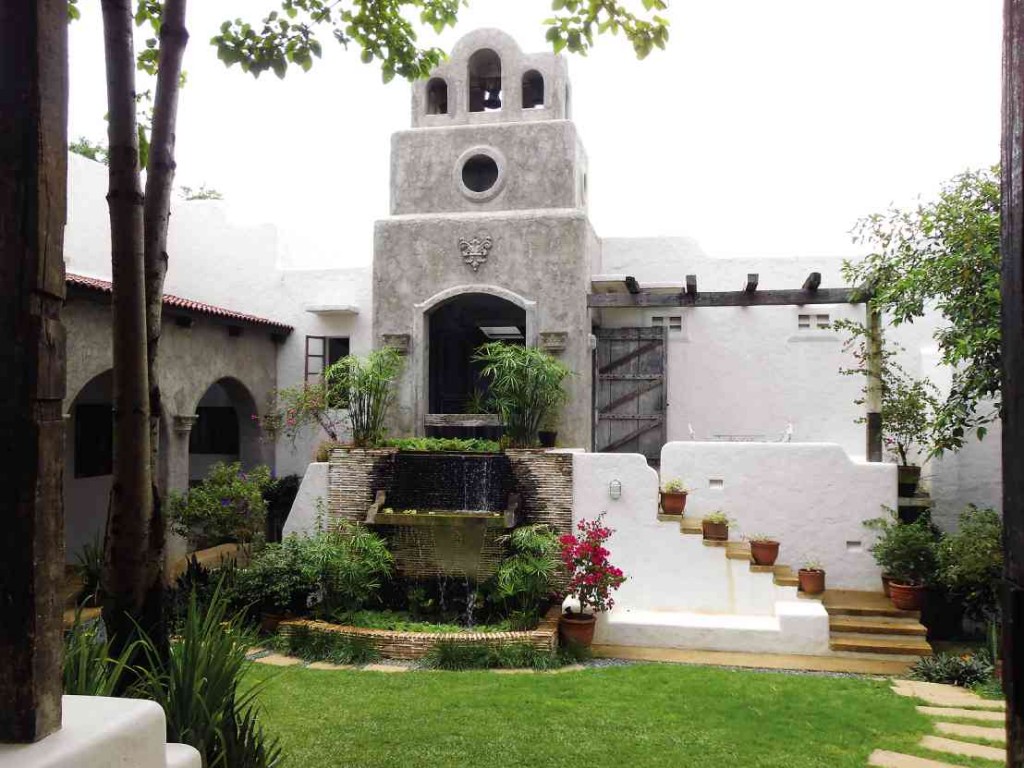Pinto Museum’s art management philosophy

VISITORS can spend a whole afternoon roaming around the different buildings or simply sit by the different gardens to enjoy the view. PHOTOS BY MA. ESTHER SALCEDO-POSADAS
ANTIPOLO, Rizal—The rugged, seemingly Southwestern (New Mexico, Arizona) architecture attracts the attention of first time visitors for its refreshingly natural garden surroundings that say very little about the art treasures nestled within its walls.
Pinto Art Museum is built on a 1.2 hectare property composed of six buildings.
Currently run by the Silangan Foundation for the Arts, Culture, and Ecology, the museum is the brainchild of neurologist Dr. Joven Cuanang, retired SVP and Chief Medical Officer at St. Luke’s Hospital Global City.
Museum Manager Mikey Blanco explains that the undertaking didn’t start out big. Dr. Cuanang first acquired a modest house and lot in the 70s then opened the Pinto Gallery around 2000.
Ten years later, they opened the Pinto Art Museum.
“Even if it is out of the way, doc still decided to push through with it because he was the patron of Saling Pusa.”
Saling Pusa then was a group of amateur artists mostly from Antipolo. According to Blanco, Dr. Cuanang started promoting their artworks around the 90s by simply hanging them on a clothesline, which became known as Sampayan Art.
Blanco narrates, “He called his friends just to see if they will be interested to support the artists. The first Sampayan Art exhibit was a success.”

ARTWORK by Demetrio Dela Cruz entitled “Holy Cow!” The fattened cow and Louis Vuitton bag seem to allude to the excesses coming from such purchases.
Some of the Saling Pusa artists eventually made a name for themselves such as Elmer Borlongan, Jose Santos III, Tony Leano who designed the museum buildings, Jim Orencio former museum manager, Ferdie Montemayor, and Pamela Yan Santos.
Blanco says that Dr. Cuanang had a specific philosophy in mind when he launched the gallery and eventually, the museum. “He poured his own personal wealth into the museum, not really for business or profit, but to perform a civic duty for the Filipino people.”
He continues, “One thing lacking in the Philippines is education and appreciation of art and culture. The mere fact that this private museum was opened to the public already speaks volumes about the kind of person Dr. Cuanang is.”
The museum currently operates without any grants from the Philippine government and strives to remain self-supporting.

INSIDE the museum compound, Pinto Café (run by the Bizu restaurant group) also offers a few dishes such as Shrimp Gnocchi made of potato gnocchi pasta, fresh shrimps, garlic, tarragon, buerre noisette (P295) and Papardelle Duck Confit made of salted duck leg, duck fat, mushroom ragout, garlic, papardelle pasta (P375), plus other entrée and dessert options.
With regard to conservation, the art pieces are not preserved in air-conditioned buildings but are left to the natural elements. “We recognize problems caused by weathering. Since we have no plans of changing the open air structure, the future plan is to rotate the collection,” Blanco says.
When asked why air-conditioning is not part of the plan, Blanco replies, “This is what doc wants. He is a nature [loving] guy. He just wants everything natural.” Blanco further cites an example that inside the museum, visitors will find stones that were left untouched and became part of the overall structure.
In a nutshell, Blanco sums up the museum’s overall mission: “Pinto is primarily a museum but also champions conservation of nature, education of the Filipino people, and opening doors for talented artists.”
The museum is located along Sierra Madre Street in Grandheights Subdivision, Antipolo City. It is open from Tuesday to Sunday, 9 a.m. to 6 p.m. Entrance fee is P150 adults, P120 seniors, and P75 students. For more details, call the landline 697-1015 or e-mail pintoartmuseum@yahoo.com.

